Huh, It’s Almost As If Diversity In Backgrounds/abilities Results In Greater Diversity Of Thought
Huh, it’s almost as if diversity in backgrounds/abilities results in greater diversity of thought
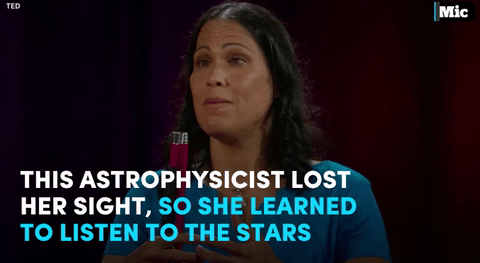

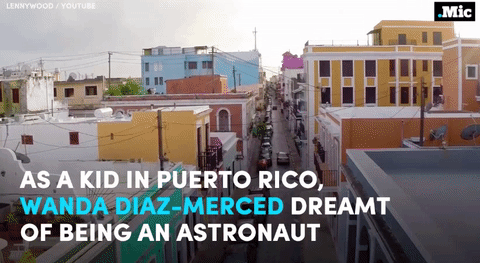

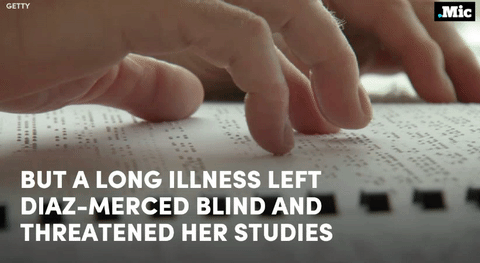

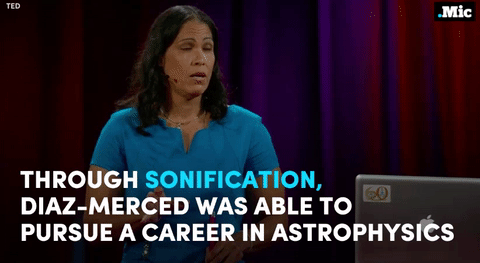




follow @the-future-now
More Posts from Stubborn-turtle-blog and Others
Constellations and the Calendar
Did you recently hear that NASA changed the zodiac signs? Nope, we definitely didn’t…
…Here at NASA, we study astronomy, not astrology. We didn’t change any zodiac signs, we just did the math. Here are the details:
First Things First: Astrology is NOT Astronomy…
Astronomy is the scientific study of everything in outer space. Astronomers and other scientists know that stars many light years away have no effect on the ordinary activities of humans on Earth.
Astrology is something else. It’s not science. No one has shown that astrology can be used to predict the future or describe what people are like based on their birth dates.

Some curious symbols ring the outside of the Star Finder. These symbols stand for some of the constellations in the zodiac. What is the zodiac and what is special about these constellations?

Imagine a straight line drawn from Earth though the sun and out into space way beyond our solar system where the stars are. Then, picture Earth following its orbit around the sun. This imaginary line would rotate, pointing to different stars throughout one complete trip around the sun – or, one year. All the stars that lie close to the imaginary flat disk swept out by this imaginary line are said to be in the zodiac.

The constellations in the zodiac are simply the constellations that this imaginary straight line points to in its year-long journey.
What are Constellations?
A constellation is group of stars like a dot-to-dot puzzle. If you join the dots—stars, that is—and use lots of imagination, the picture would look like an object, animal, or person. For example, Orion is a group of stars that the Greeks thought looked like a giant hunter with a sword attached to his belt. Other than making a pattern in Earth’s sky, these stars may not be related at all.

Even the closest star is almost unimaginably far away. Because they are so far away, the shapes and positions of the constellations in Earth’s sky change very, very slowly. During one human lifetime, they change hardly at all.
A Long History of Looking to the Stars
The Babylonians lived over 3,000 years ago. They divided the zodiac into 12 equal parts – like cutting a pizza into 12 equal slices. They picked 12 constellations in the zodiac, one for each of the 12 “slices.” So, as Earth orbits the sun, the sun would appear to pass through each of the 12 parts of the zodiac. Since the Babylonians already had a 12-month calendar (based on the phases of the moon), each month got a slice of the zodiac all to itself.

But even according to the Babylonians’ own ancient stories, there were 13 constellations in the zodiac. So they picked one, Ophiuchus, to leave out. Even then, some of the chosen 12 didn’t fit neatly into their assigned slice of the pie and crossed over into the next one.

When the Babylonians first invented the 12 signs of zodiac, a birthday between about July 23 and August 22 meant being born under the constellation Leo. Now, 3,000 years later, the sky has shifted because Earth’s axis (North Pole) doesn’t point in quite the same direction.

The constellations are different sizes and shapes, so the sun spends different lengths of time lined up with each one. The line from Earth through the sun points to Virgo for 45 days, but it points to Scorpius for only 7 days. To make a tidy match with their 12-month calendar, the Babylonians ignored the fact that the sun actually moves through 13 constellations, not 12. Then they assigned each of those 12 constellations equal amounts of time.
So, we didn’t change any zodiac signs…we just did the math.
Make sure to follow us on Tumblr for your regular dose of space: http://nasa.tumblr.com
I can see the good this could do, but all too easily this could be just another tool for Big Brother
At just 1.2 pounds and eight inches long, the camera-equipped rolling robot can be quite literally tossed like a football onto rooftops or through building windows. Its design ensures it lands upright in pretty much any situation where it hits a flat surface, and once deployed it can stealthily move under furniture, cars, or other cover and beam back live video to a command station 1,000 feet away. It is designed to be controlled by an operator working alongside it via a simple joystick control that also sports a small display that provides a ‘bots’-eye view.





Flat House + Atelier So-So. 鶴川の家 - Tsurukawa House. Kanagawa. Japan. photos: Flat House
Phone becomes your weapon if spells aren’t equipped

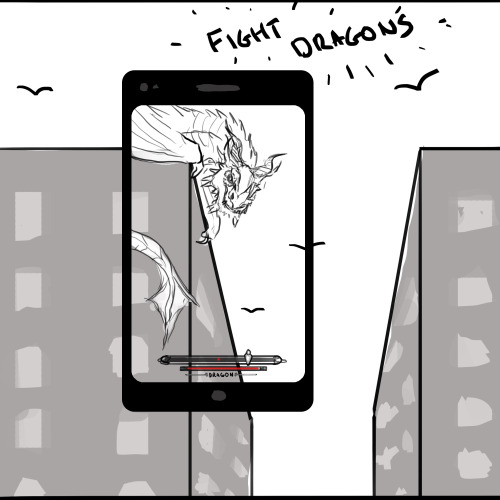


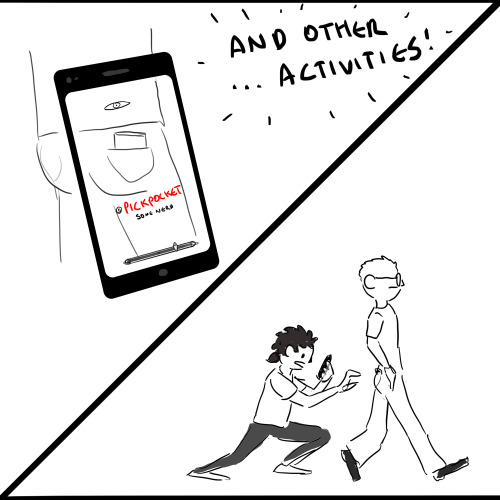
no cheese shop would be safe
My question is, is the IDA going to be a standard for spacecraft? Do we have standard ports already?
Spacewalk Friday: Installing a New "Parking Spot" on Station
This Friday, Aug. 19, two U.S. astronauts will install a new gateway for American commercial crew spacecraft at the International Space Station.

Commercial crew flights from Florida’s Space Coast to the International Space Station will restore America’s human spaceflight launch capability and increase the time U.S. crews can dedicate to scientific research.

The adapter being installed (imaged below) was launched on a SpaceX Dragon cargo spacecraft and arrived on orbit July 20. This ring is known as an International Docking Adapter, or IDA, and its main purpose is to provide a port for spacecraft bringing astronauts to the station in the future. Outfitted with a host of sensors and systems, the adapter is built so spacecraft systems can automatically perform all the steps of arrival and docking with the station without input from the astronauts.
NASA astronauts Jeff Williams and Kate Rubins will perform the spacewalk to install the equipment this Friday, Aug. 19. This will be the fourth spacewalk in Williams’ career and the first for Rubins.

Four previous spacewalks…like the one below…helped set the stage for installation of this docking adapter. During those previous spacewalks, other crew members laid hundreds of feet of power and data cables outside the space station.

On Wednesday, the robotics team using the Canadarm2 and its attached “Dextre” manipulator, will reach into the SpaceX Dragon trunk and pull out the docking adapter and position it for Friday’s spacewalk activities.

The morning of the spacewalk, while the astronauts are getting suited up, the robotic arm will position the docking adaptor near the port so that it will be ready for installation.

The two astronauts will venture outside the space station to install the first International Docking Adapter (IDA). This new adapter port will provide a parking space for U.S. Commercial Crew vehicles.
Watch LIVE!
Coverage of the spacewalk begins at 6:30 a.m. EDT on Friday, Aug. 19; with the spacewalk scheduled to begin at 8:05 a.m. EDT. Stream live online HERE.
Make sure to follow us on Tumblr for your regular dose of space: http://nasa.tumblr.com


There’s only one way to clean the inside of your hood. Here we see our rotation student, Cam, demonstrating the effectiveness of the technique;)
Using the Power of Space to Fight Cancer
From cancer research to DNA sequencing, the International Space Space is proving to be an ideal platform for medical research. But new techniques in fighting cancer are not confined to research on the space station. Increasingly, artificial intelligence is helping to “read” large datasets. And for the past 15 years, these big data techniques pioneered by our Jet Propulsion Laboratory have been revolutionizing biomedical research.
Microgravity Research on Space Station
On Earth, scientists have devised several laboratory methods to mimic normal cellular behavior, but none of them work exactly the way the body does. Beginning more than 40 years ago aboard Skylab and continuing today aboard the space station, we and our partners have conducted research in the microgravity of space. In this environment, in vitro cells arrange themselves into three-dimensional groupings, or aggregates. These aggregates more closely resemble what actually occurs in the human body. Cells in microgravity also tend to clump together more easily, and they experience reduced fluid shear stress – a type of turbulence that can affect their behavior. The development of 3D structure and enhanced cell differentiation seen in microgravity may help scientists study cell behavior and cancer development in models that behave more like tissues in the human body.

In addition, using the distinctive microgravity environment aboard the station, researchers are making further advancements in cancer therapy. The process of microencapsulation was investigated aboard the space station in an effort to improve the Earth-based technology. Microencapsulation is a technique that creates tiny, liquid-filled, biodegradable micro-balloons that can serve as delivery systems for various compounds, including specific combinations of concentrated anti-tumor drugs. For decades, scientists and clinicians have looked for the best ways to deliver these micro-balloons, or microcapsules, directly to specific treatment sites within a cancer patient, a process that has the potential to revolutionize cancer treatment.

A team of scientists at Johnson Space Center used the station as a tool to advance an Earth-based microencapsulation system, known as the Microencapsulation Electrostatic Processing System-II (MEPS-II), as a way to make more effective microcapsules. The team leveraged fluid behavior in microgravity to develop a new technique for making these microcapsules that would be more effective on Earth. In space, microgravity brought together two liquids incapable of mixing on Earth (80 percent water and 20 percent oil) in such a way that spontaneously caused liquid-filled microcapsules to form as spherical, tiny, liquid-filled bubbles surrounded by a thin, semipermeable, outer membrane. After studying these microcapsules on Earth, the team was able to develop a system to make more of the space-like microcapsules on Earth and are now performing activities leading to FDA approval for use in cancer treatment.

In addition, the ISS National Laboratory managed by the Center for the Advancement of Science in Space (CASIS) has also sponsored cancer-related investigations. An example of that is an investigation conducted by the commercial company Eli Lilly that seeks to crystallize a human membrane protein involved in several types of cancer together with a compound that could serve as a drug to treat those cancers.
“So many things change in 3-D, it’s mind-blowing – when you look at the function of the cell, how they present their proteins, how they activate genes, how they interact with other cells,” said Jeanne Becker, Ph.D., a cell biologist at Nano3D Biosciences in Houston and principal investigator for a study called Cellular Biotechnology Operations Support Systems: Evaluation of Ovarian Tumor Cell Growth and Gene Expression, also known as the CBOSS-1-Ovarian study. “The variable that you are most looking at here is gravity, and you can’t really take away gravity on Earth. You have to go where gravity is reduced."
Crunching Big Data Using Space Knowledge

Our Jet Propulsion Laboratory often deals with measurements from a variety of sensors – say, cameras and mass spectrometers that are on our spacecraft. Both can be used to study a star, planet or similar target object. But it takes special software to recognize that readings from very different instruments relate to one another.
There’s a similar problem in cancer research, where readings from different biomedical tests or instruments require correlation with one another. For that to happen, data have to be standardized, and algorithms must be “taught” to know what they’re looking for.
Because space exploration and cancer research share a similar challenge in that they both must analyze large datasets to find meaning, JPL and the National Cancer Institute renewed their research partnership to continue developing methods in data science that originated in space exploration and are now supporting new cancer discoveries.
JPL’s methods are leading to the development of a single, searchable network of cancer data that researcher can work into techniques for the early diagnosis of cancer or cancer risk. In the time they’ve worked together, the two organizations’ efforts have led to the discovery of six new Food and Drug Administration-approved cancer biomarkers. These agency-approved biomarkers have been used in more than 1 million patient diagnostic tests worldwide.
Make sure to follow us on Tumblr for your regular dose of space: http://nasa.tumblr.com

Sympathy cards for scientists | @myjetpack
The Sciences, in Brief
Geology: lick the rock
Psychology: brainception
Genetics: Punett squares and percentages
Chemistry: what is water?
Biology: no math for the love of God
Physics: 1001 ways to throw things
Astronomy: the nerds of the science world
-
 theherdofturtles liked this · 1 week ago
theherdofturtles liked this · 1 week ago -
 redeemedmillennial liked this · 2 weeks ago
redeemedmillennial liked this · 2 weeks ago -
 apenitentialprayer liked this · 2 weeks ago
apenitentialprayer liked this · 2 weeks ago -
 wolvenjay liked this · 2 weeks ago
wolvenjay liked this · 2 weeks ago -
 thelegendofsqam reblogged this · 2 weeks ago
thelegendofsqam reblogged this · 2 weeks ago -
 unconvenchinal-charm-reactivated reblogged this · 2 weeks ago
unconvenchinal-charm-reactivated reblogged this · 2 weeks ago -
 morningmask27 reblogged this · 1 month ago
morningmask27 reblogged this · 1 month ago -
 o2studies liked this · 1 month ago
o2studies liked this · 1 month ago -
 keys-home reblogged this · 1 month ago
keys-home reblogged this · 1 month ago -
 strawberry-muffin-crisis liked this · 1 month ago
strawberry-muffin-crisis liked this · 1 month ago -
 pumpkinpatch-kid reblogged this · 1 month ago
pumpkinpatch-kid reblogged this · 1 month ago -
 sillykittypaws liked this · 1 month ago
sillykittypaws liked this · 1 month ago -
 a-shower-of-roses reblogged this · 1 month ago
a-shower-of-roses reblogged this · 1 month ago -
 chompchain22 reblogged this · 1 month ago
chompchain22 reblogged this · 1 month ago -
 midknightsnack liked this · 1 month ago
midknightsnack liked this · 1 month ago -
 coldbrew-slut liked this · 1 month ago
coldbrew-slut liked this · 1 month ago -
 naanviolent reblogged this · 1 month ago
naanviolent reblogged this · 1 month ago -
 qualityblizzardcreation reblogged this · 2 months ago
qualityblizzardcreation reblogged this · 2 months ago -
 whistlesalot liked this · 2 months ago
whistlesalot liked this · 2 months ago -
 cavernofthewillowtree liked this · 2 months ago
cavernofthewillowtree liked this · 2 months ago -
 azorawing reblogged this · 2 months ago
azorawing reblogged this · 2 months ago -
 azorawing liked this · 2 months ago
azorawing liked this · 2 months ago -
 saladballad27 reblogged this · 2 months ago
saladballad27 reblogged this · 2 months ago -
 cupofcoca reblogged this · 2 months ago
cupofcoca reblogged this · 2 months ago -
 cupofcoca liked this · 2 months ago
cupofcoca liked this · 2 months ago -
 leenaisstudying liked this · 2 months ago
leenaisstudying liked this · 2 months ago -
 councillorenmagicked liked this · 2 months ago
councillorenmagicked liked this · 2 months ago -
 mouchiiarts reblogged this · 2 months ago
mouchiiarts reblogged this · 2 months ago -
 mouchiiarts liked this · 2 months ago
mouchiiarts liked this · 2 months ago -
 honeynebula reblogged this · 2 months ago
honeynebula reblogged this · 2 months ago -
 honeynebula liked this · 2 months ago
honeynebula liked this · 2 months ago -
 waitingforcatstotakeover liked this · 2 months ago
waitingforcatstotakeover liked this · 2 months ago -
 acemaii liked this · 2 months ago
acemaii liked this · 2 months ago -
 yuyanhere liked this · 2 months ago
yuyanhere liked this · 2 months ago -
 gerardwaygender reblogged this · 2 months ago
gerardwaygender reblogged this · 2 months ago -
 gothmuppetenthusiast reblogged this · 2 months ago
gothmuppetenthusiast reblogged this · 2 months ago -
 lawtism reblogged this · 2 months ago
lawtism reblogged this · 2 months ago -
 mylifeisjustaseriesofjokesonme reblogged this · 2 months ago
mylifeisjustaseriesofjokesonme reblogged this · 2 months ago -
 keys-home reblogged this · 2 months ago
keys-home reblogged this · 2 months ago -
 mylifeisjustaseriesofjokesonme liked this · 2 months ago
mylifeisjustaseriesofjokesonme liked this · 2 months ago -
 keys-home liked this · 2 months ago
keys-home liked this · 2 months ago -
 vertebratee liked this · 2 months ago
vertebratee liked this · 2 months ago -
 beangods reblogged this · 2 months ago
beangods reblogged this · 2 months ago -
 beangods liked this · 2 months ago
beangods liked this · 2 months ago
Gaming, Science, History, Feminism, and all other manners of geekery. Also a lot of dance
243 posts
